The Sun in HD: Latest Photos by NASA's Solar Dynamics Observatory
NASA's Solar Dynamics Observatory Sees Huge Solar Flare
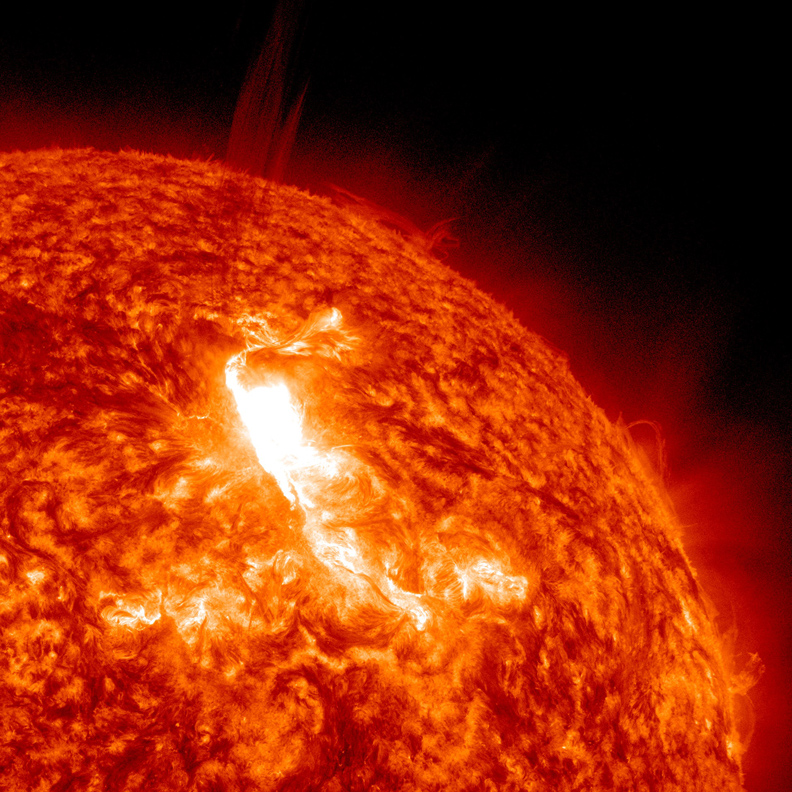
Solar Dynamics Observatory captured the flare, shown here in red/orange as that is the color typically used to show light in the 304 Angstrom wavelength. The flare began at 10:38 PM ET on Jan. 22, peaked at 10:59 PM and ended at 11:34 PM.
Quiet Sun During Solar Max
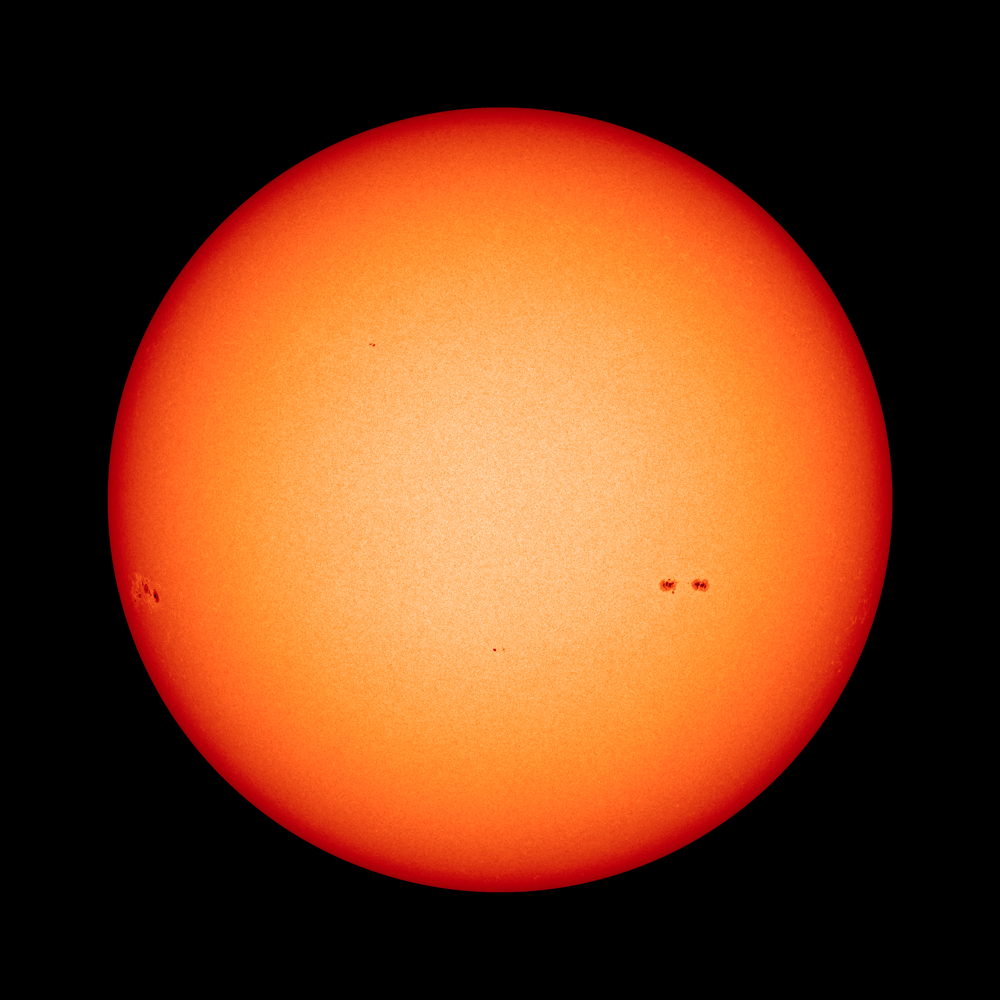
This image shows the Earth-facing surface of the Sun on February 28, 2013, as observed by the Helioseismic and Magnetic Imager (HMI) on NASA’s Solar Dynamics Observatory. HMI observed just a few small sunspots on an otherwise clean face, which is usually riddled with many spots during peak solar activity.
Two Sunspots February 2013
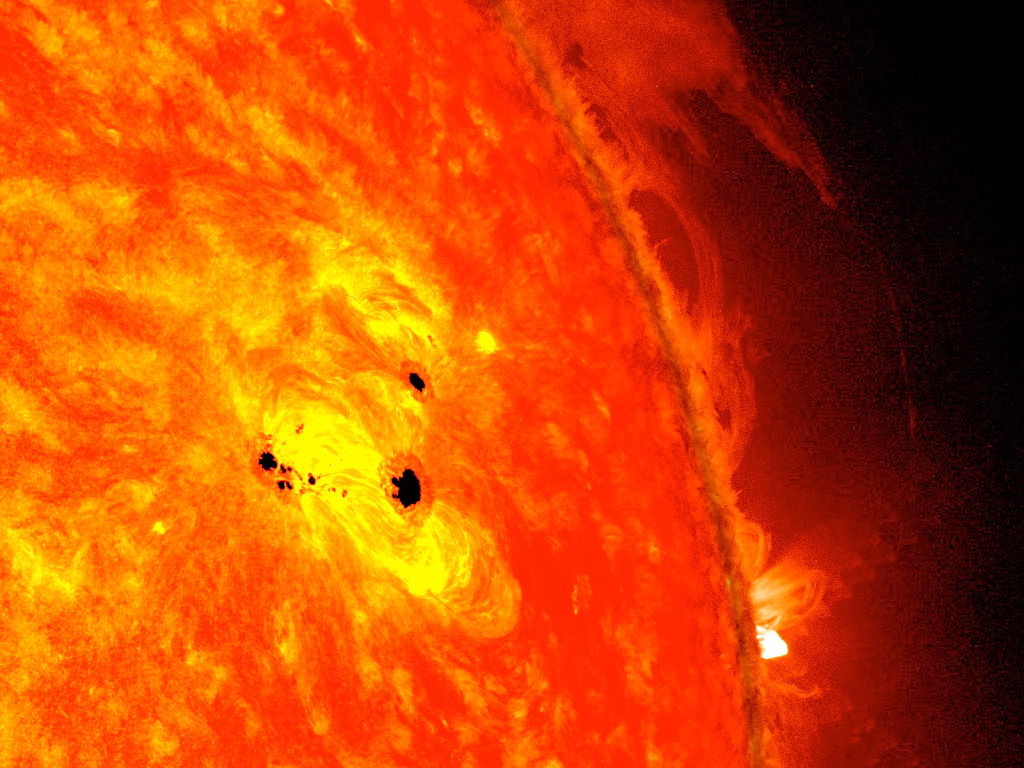
The bottom two black spots on the sun, known as sunspots, appeared quickly over the course of Feb. 19-20, 2013. These two sunspots are part of the same system and are over six Earths across.
Solar Flare Captured by Solar Dynamics Observatory
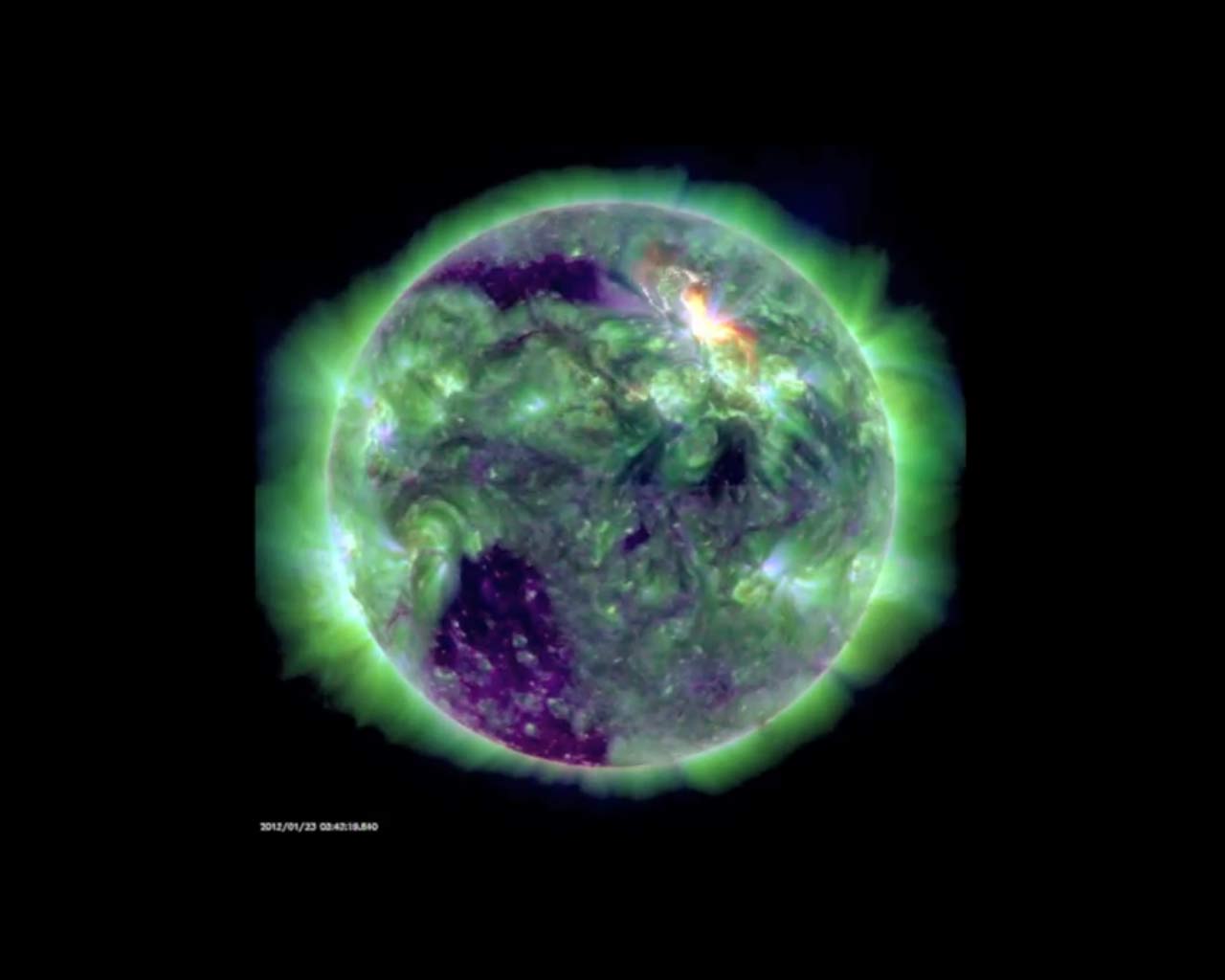
NASA's Solar Dynamics Observatory observed the massive solar flare that erupted on the sun on Jan. 23, 2012 (0359 GMT; 10:59 p.m. EST).
Solar Prominence Sun 'Twister' - Solar Dynamics Observatory
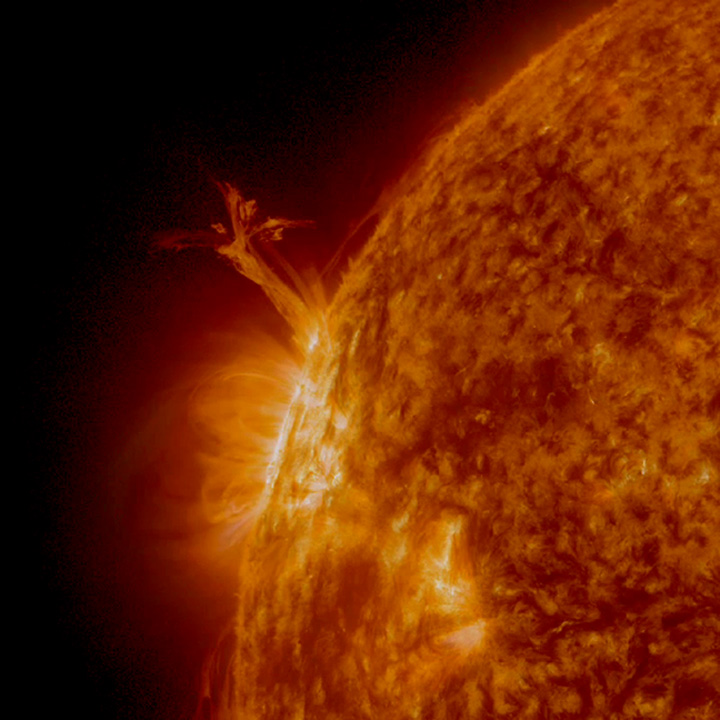
A stalk-like prominence rose up above the sun, then split into roughly four strands that twisted themselves into a knot and dispersed over a two-hour period (July 12, 2011). NASA's Solar Dynamics Observatory took a video of the sun twister.
NASA's Solar Dynamics Observatory - Sun's Magnetic Rope
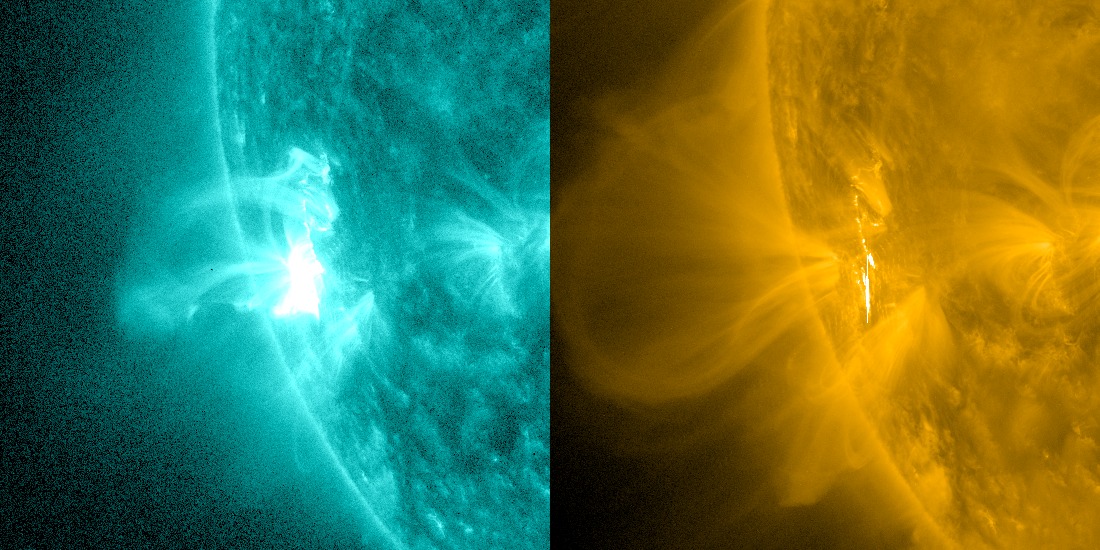
On the left, NASA's Solar Dynamics Observatory shows the magnetic rope as the thick looped structure extending above the edge of the sun. On the right, SDO observes as the surrounding cool magnetic field lines are pushed away by the intruding magnetic rope seen on the left. Both images are taken almost simultaneously (within three seconds of each other).
M-Class Solar Flare - Solar Dynamics Observatory
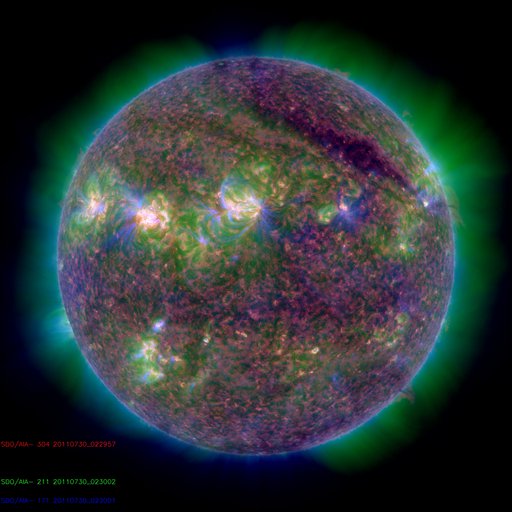
A powerful M9-class solar flare erupted from the sun at 10:09 p.m. EDT on July 29 (0209 GMT July 30).
Get the Space.com Newsletter
Breaking space news, the latest updates on rocket launches, skywatching events and more!
Huge Solar Flare Seen by Solar Dynamics Observatory - January 23, 2012
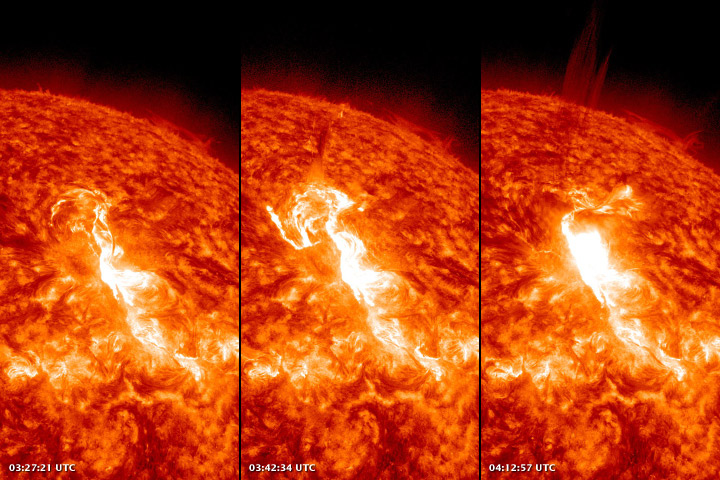
The images above show a HUGE solar flare as observed by the Atmospheric Imaging Assembly (AIA) on NASA’s Solar Dynamics Observatory (SDO) at 0327, 0342, and 0412 GMT on January 23 (10:27 p.m., 10:42 p.m. and 11:12 p.m. EST on Jan. 22).
Solar Dynamics Observatory Sees Jan. 23 Solar Flare

NASA's Solar Dynamics Observatory observed the M9-class solar flare that sparked the strongest radiation storm since 2005.
Solar Flare Seen by NASA's Solar Dynamics Observatory
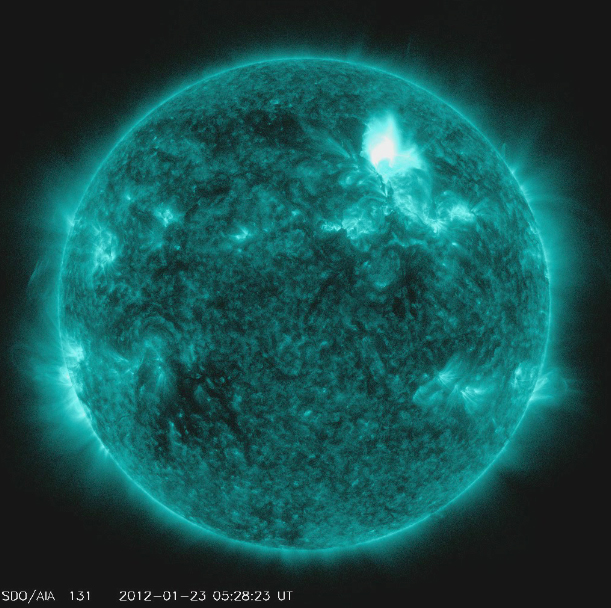
NASA's Solar Dynamics Observatory captured the flare, shown here in teal as that is the color typically used to show light in the 131 Angstrom wavelength, a wavelength in which it is easy to view solar flares. The flare began at 10:38 PM ET on Jan. 22, peaked at 10:59 PM and ended at 11:34 PM.
Join our Space Forums to keep talking space on the latest missions, night sky and more! And if you have a news tip, correction or comment, let us know at: community@space.com.

Space.com is the premier source of space exploration, innovation and astronomy news, chronicling (and celebrating) humanity's ongoing expansion across the final frontier. Originally founded in 1999, Space.com is, and always has been, the passion of writers and editors who are space fans and also trained journalists. Our current news team consists of Editor-in-Chief Tariq Malik; Editor Hanneke Weitering, Senior Space Writer Mike Wall; Senior Writer Meghan Bartels; Senior Writer Chelsea Gohd, Senior Writer Tereza Pultarova and Staff Writer Alexander Cox, focusing on e-commerce. Senior Producer Steve Spaleta oversees our space videos, with Diana Whitcroft as our Social Media Editor.









